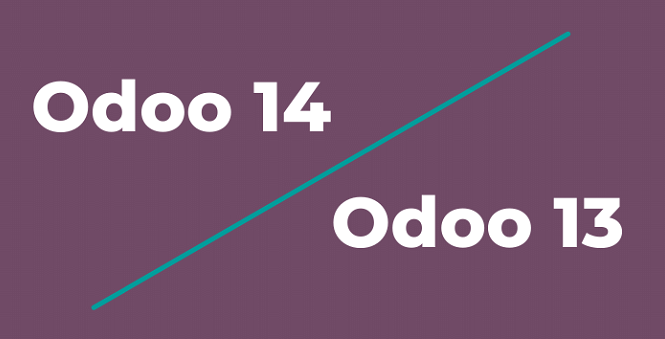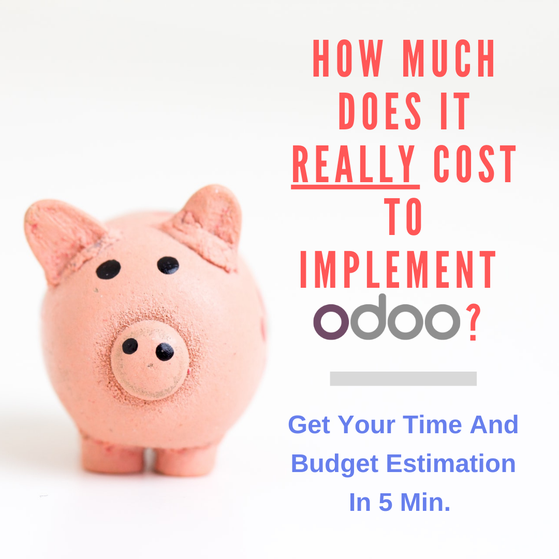What are the differences between Odoo 13 and Odoo 14? Odoo, the ideal solution for all ERP-related problems, presents an updated version to its users every year. Also in 2021, the company introduced us to version 14.0 to improve the user experience.
The new version of Odoo is another planned upgrade with several new modules and improved features. Compared to Odoo 13.0, Odoo 14.0 is more focused on saving employee time and providing integration between applications.
A glimpse into the new functions and opportunities of Odoo 14 will help you understand the advantages of Odoo 14 over Odoo 13. It’ll also allow you to quickly adapt to changes if you are planning to upgrade from Odoo 13 to 14.
The Differences Between Odoo 13 And Odoo 14: General and Basics

Odoo 14 provides an impetus for improvement through the introduction of new modules and one application. However, while Odoo 13 was more focused on introducing new applications, Odoo 14 focused on improving the user interface.
Odoo 13 has released a list of new apps:
- Field Service Management
- Referrals
- E-Learning
Odoo 14 introduced only 1 new application. Instead of adding something new to the existing system, the new application in Odoo 14.0 focuses on cleaning up space. Odoo 14’s enhancements are more focused on safety and outcome than technology.
Next, we’ll take a look at the key differences between Odoo 13.0 and Odoo 14.0.
Odoo 14: Power, Saving Memory, And Free Space
The Odoo team introduced a new app in Odoo 14.0 to avoid the clutter of the cloud-based software system. The app called Data Cleanup is a completely new concept in comparison with Odoo 13.0. The new version of Odoo 14 is sure to speed up your work, as all unnecessary documents can be automatically deleted using the data cleanup app.
Compared to Odoo 13 and Odoo 14 will help you save your computer memory and cloud storage. Odoo 13 did not have a feature to flag duplicate documents or the accumulation of unnecessary documents. Now it will become much easier to get rid of unnecessary volumes of information.
An Elegant And User Friendly Ecommerce Website

Odoo 14.0 offers the best solution for eCommerce platforms. Compared to Odoo 13, it has a lot of widgets specially designed to improve the website experience.
Implementing a company with Odoo 14.0 will be able to provide a professional eCommerce website without wasting time.
Unlike Odoo 13.0, Odoo version 14.0 has many website determined widgets, for example:
- Automatic popup widget
- Countdown snippet
- Masonry snippet
Website Functions And Features
In the Odoo 14 website module, working SEO tools like Google analytics and functional search tools in the console can be executed from the configured options. The new website module in Odoo 14 is a boon for any company’s digital marketing team.
Inventory and Production
With Odoo 14’s inventory management module, the user can check the replenishment module to view product replenishment orders and inventory transactions.
In the production unit of Odoo 14, the user can enable the blocking of the number of products used. This will help the user to have complete control over the production operations with the possibility of editing.
Point Of Sale
Odoo 14 introduced two new user interfaces for PoS. This allows the user to easily customize the new product and parent category. Parental tagging is not possible in Odoo 13. Another new feature is the email billing feature.
Compared to the products and product options in the product category in older versions of Odoo, Odoo 14 introduced two more features – price lists and consumer loyalty programs.
The newly developed PoS app module in Odoo 14 makes it easy for up to 6 additional payment integration payments. The user is able to seamlessly update the inventory in the PoS with real-time updates at the end of each session.
Odoo 14.0 Modules
There are countless feature updates in the various Odoo ERP modules. Here are some of the recently added features available in Odoo version 14:
- Through the product catalog widget, the user will see the product catalog widget in the website module.
- To make communication more lively and talkative, users can interact using emoji with text characters.
- The user will be able to see the status of the inventory through the schematic diagram.
- Odoo 14 will notify users of the strength of the password.
- Odoo 14 requires a signature from the recipient.
- Odoo 14 will automatically detect duplicate data and highlight it so you can easily remove duplicate information from your ERP.
The Difference In The Document Module
Odoo 14 document module is destined to create a spreadsheet of sales, procurement, income, and budget documents with one click. This feature, missing in Odoo 13, helps you create quick analyzes and reports.
CRM Module In Odoo 13 And Odoo 14?
Odoo 14 introduces a new Lead Generation tab in the CRM module. This allows the user to generate leads, including details of the state, country, industry size, and other aspects.
What’s more, Odoo 14 has advanced features to add a customer’s email address and phone number. On the other hand, Odoo 13 only provides customer details and expected revenue.
Difference Between Purchase Module In Odoo 13 And Odoo 14
Odoo 14 places more emphasis on cleanliness and easy viewing of dashboards. Instead of an oversaturated list of requests for quotation in Odoo 13, Odoo 14 offers a compact and beautiful view with detailed information about requests to be sent, pending and late. It also gives a clear indication of the lead time.
These innovations can help improve your company’s performance. Another new feature in Odoo 14 is the confirmation prompt. While Odoo 13 doesn’t have the ability to ask for confirmation from suppliers or retailers, Odoo 14 offers this feature to improve small businesses.
Odoo 14: A More Complete Inventory Module
Odoo 14 gives you a well-organized inventory overview with added tabs for collecting and packing documents as well as documents for internal transfer.
Compared to the previous version, the key advantage of Odoo 14 is its restocking capability – Replenishment option. The tab helps you to get the goods in stock and easily predict the preferred items. It also allows reordering rules to be established to make the replenishment activity more scientific.
Manufacturing Module In Odoo 13 And Odoo 14
Manufacturing is the backbone of any business concept. Odoo 14 didn’t make any direct changes to the production module, however. The key difference that can be seen in the Manufacturing module in Odoo 14 is the inclusion of the Planning tab. This allows the user to run the scheduler. This feature will ensure product availability for use. In addition, it will also affect the reordering process.
Difference Between Forecast Management In Odoo 13 And Odoo 14
While Odoo 13 offered support for forecasting in inventory, Odoo 14 also offers forecasting assistance for sales and purchasing management.
Improvements in Odoo 14 are as follows:
- Smart date picker: In Odoo 13, you need to click back or forward to set the deadline. The process will not change even if you had to pick a date 10 years ago. But with Odoo 14, date picking just got smarter. You can select any date with one click. This turns out to be useful for procurement and documentation.
- Odoo 14 helps you express joy: Odoo 14 introduces an emoji widget to make communication more informal. Odoo 13 lacked animated features for communication.
- Expense Dashboard offers expense reporting: Unlike Odoo 13, Odoo 14 Expense Dashboard offers a clear picture of expense reporting. It can contain more than 15 details, including links to tax accounts and currency information. On the other hand, Odoo 13, the expense dashboard entitled “My Expenses,” can only list minimal details.
There are many minor differences in features between Odoo 13 and 14 that can be easily adapted once you start using Odoo 14. Whatever the change, Odoo 14 is sure to improve the experience of your employees and other users.